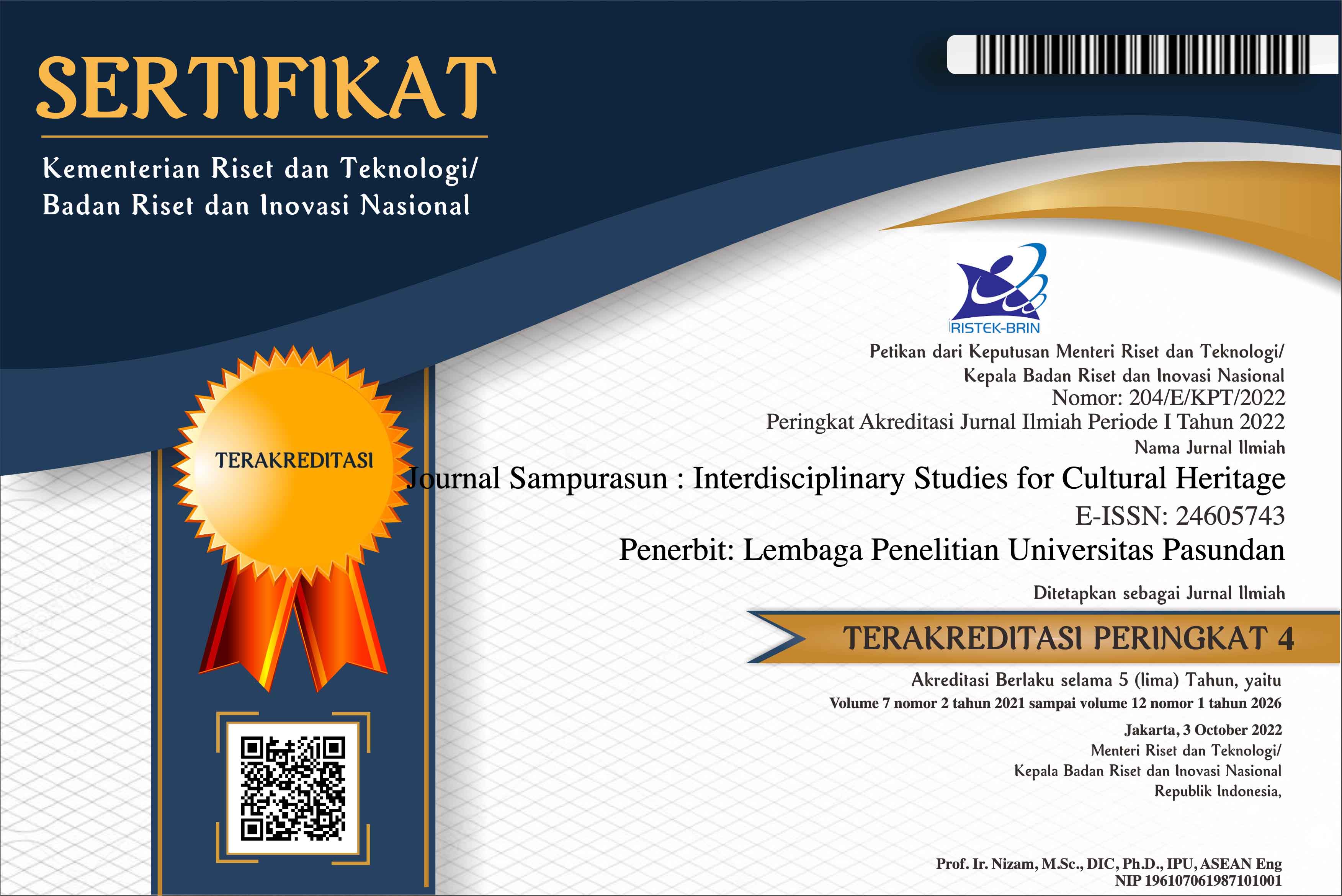“FROM TANGIBLE SPACE TO INTANGIBLE SPACE“ KANOMAN PALACE AND KACIREBONAN PALACE
DOI:
https://doi.org/10.23969/sampurasun.v3i2.635Keywords:
Tangible Space, Intangible Space, Kanoman Palace, Kacirebonan PalaceAbstract
Physical space or called tangible spaces are spaces that can be physically captured by the senses while nonphysical or intangible space is a space that is not caught by the senses. Anthropological research argues that the first 'double built' space is a physical building and the second is a result of interpretation of taste and imagination (Gieryn, in Short, 2015). Kanoman palace and Kacirebonan palace is a palace located in the city of Cirebon. The two palaces not only physically still have the form of a palace building but also still have mystics believed by the community as an integral part of human life. The purpose of this paper is to show tangible space and intangible space in both palaces as part of the meaning of the palace. The method used is the research method of Husserl phenomenology and conducting the review literature from the results of the themes that appear especially space in both palaces. The result shows that these two palaces have different spatial arrangements and different building arrangements but the direction of the northward winds into the sacred position of the palace. The position is related to the position of the tomb of Sunan Gunung Jati as an ancestor and founder of the palace in Cirebon. The position is manifested as intangible space palaces in Cirebon.
Downloads
Downloads
Published
Issue
Section
License
Copyright Notice
Authors should not withdraw their submitted papers because the withdrawal wastes voluntary works devoted by an associate editor and reviewers. But, we accept the withdrawal of a submitted paper if authors have unavoidable reasons. In the event that a manuscript is to be withdrawn from submission to Sampurasun Journal, a letter must be sent to the editorial office requesting withdrawal by e-mail (sampurasunjournal@unpas.ac.id) with its scanned PDF file, before the notification of acceptance for publication.
The withdraw request letter must include the following information. Paper ID, Paper title, Authors names, Reason why the paper must be withdrawn, and Date and signatures of all the authors (or signature of the contact author).
If only the contact author signs the letter, he/she must obtain the agreement of the withdrawal from all the other authors and the letter must include the description that all the other authors agreed the withdrawal. The journal will not withdraw a manuscript from peer review until such a letter has been received. Authors must not assume their manuscript has been withdrawn until they have received appropriate notification from the editorial office. Withdrawal of a manuscript subsequent to acceptance for publication will only be granted in the most exceptional of circumstances.
After the paper is accepted for publication, the withdrawal is not permitted in principle. The authors must always pay the charge even if the withdrawal is permitted. Any request of withdrawal that does not follow the above procedure is treated as invalid. If illegal submission, e.g., plagiarized or duplicate submission, is found for a paper, the withdrawal of the paper will never be permitted and the authors will be punished based on the rule. It is not acceptable practice to withdraw a manuscript in the event of acceptance at another journal. This constitutes dual submission. The editorial office of the other journal will be notified of your actions. In such circumstances Sampurasun ISCH may chose to impose appropriate punitive action subject.
Withdrawal Penalty
Author is not allowed to withdraw submitted manuscripts, because the withdrawal is waste of valuable resources that editors and referees spent a great deal of time processing submitted manuscript, money and works invested by the publisher. If author still requests withdrawal of his/her manuscript when the manuscript is still in the peer-reviewing process, author will be punished with paying $200 per manuscript, as withdrawal penalty to the publisher. However, it is unethical to withdraw a submitted manuscript from one journal if accepted by another journal. The withdrawal of manuscript after the manuscript is accepted for publication, author will be punished by paying US$500 per manuscript. Withdrawal of manuscript is only allowed after withdrawal penalty has been fully paid to the Publisher. If author don't agree to pay the penalty, the author and his/her affiliation will be blacklisted for publication in this journal. Even, his/her previously published articles will be removed from our online system.


















